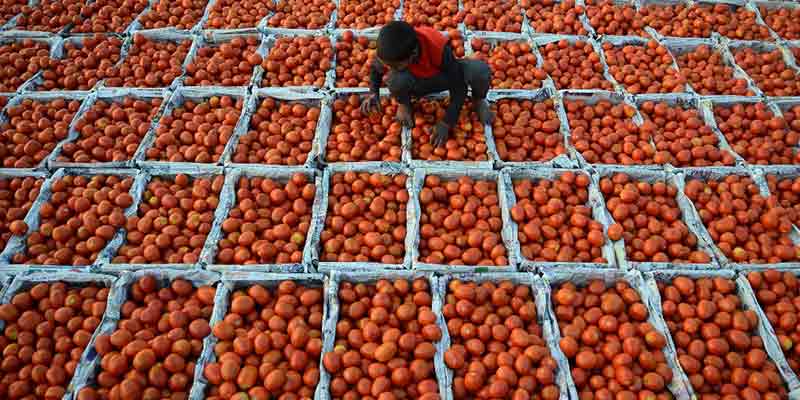- India
- Oct 28
Govt releases third advance estimates of production of horticultural crops
The government expects a record production of 342.33 million tonnes of fruits and vegetables in an area of 28.08 million hectares in 2021-22. It is an increase of about 7.73 million tonnes (2.3 per cent) over the production in 2020-21.
Ministry of agriculture and farmers welfare released the third advance estimates of the area and production of horticultural crops for the year 2021-22.
The government releases production estimates at different stages of plant growth and harvesting. Total four estimates are released before the final one.
Key points of the estimates:
• Potato production is pegged to be lower by five per cent at 53.39 million tonnes in 2021-22, as against 56.17 million tonnes in the previous year.
• Production of tomato is estimated to have declined by four per cent to 20.33 million tonnes as against 21.18 million tonnes in the comparable period.
• Production of onion is pegged higher at 31.27 million tonnes during the 2021-22 crop year as against 26.64 million tonnes in the previous year.
• Production of overall vegetables is projected to be higher at 204.84 million tonnes as against 200.45 million tonnes in the said period.
• Production of fruits is also estimated to be higher at 107.24 million tonnes during 2021-22 crop year as against 102.48 million tonnes in the previous year.
What is horticulture?
• The term horticulture is derived from two Latin words ‘hortus’, meaning garden, and ‘cultura’ meaning cultivation. It refers to crops cultivated in an enclosure — garden cultivation.
• Horticulture is a science, as well as, an art of production, utilisation and improvement of horticultural crops, such as fruits and vegetables, spices and condiments, ornamental, plantation, medicinal and aromatic plants.
• Horticultural crops require intense care in planting, carrying out intercultural operations, manipulation of growth, harvesting, packaging, marketing, storage and processing.
• Over the years, horticulture has emerged as one of the potential agricultural enterprise in accelerating the growth of economy. Its role in the country’s nutritional security, poverty alleviation and employment generation programmes is becoming increasingly important.
• It offers not only a wide range of options to the farmers for crop diversification, but also provides ample scope for sustaining a large number of agro-industries which generate huge employment opportunities.
• In India, about 55–60 per cent of the total population depends on agriculture and allied activities. Horticultural crops constitute a significant portion of the total agricultural produce in India.
• Diverse agro-climatic conditions in India ensure the production of all types of fresh fruits, vegetables and medicinal plants in different parts of the country.
National Horticulture Board
• The National Horticulture Board (NHB) was set up by the government of India in 1984 as an autonomous organisation under the administrative control of ministry of agriculture and farmers’ welfare and registered under Societies Registration Act 1860, thereafter, re-registered under the Haryana Registration and Regulation of Societies Act, 2012.
• The NHB headquarters is presently in Gurugram in Haryana and has 29 field offices located all over the country.
• The broad aims and objectives of the Board are the creation of production hubs for commercial horticulture development, post harvest infrastructure and cold chain facilities, promotion of new crops and promotion of growers’ associations.
Manorama Yearbook app is now available on Google Play Store and iOS App Store


